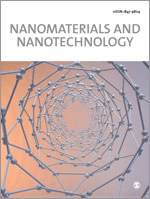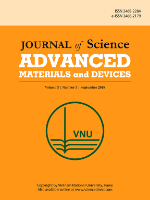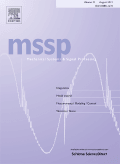
Micromachines
Scope & Guideline
Revolutionizing industries through micro and nano-scale engineering.
Introduction
Aims and Scopes
- Microfluidics and Lab-on-a-Chip Technologies:
Research centered on the development of microfluidic devices for applications in biomedical diagnostics, chemical analysis, and environmental monitoring. This includes the design, fabrication, and optimization of systems that manipulate small volumes of fluids for precise control and analysis. - MEMS (Micro-Electro-Mechanical Systems):
The exploration of MEMS technology, including sensors, actuators, and devices that integrate mechanical and electrical components at the micro-scale. Research often involves innovations in design, manufacturing techniques, and reliability assessments. - Nanotechnology Applications:
Investigations into the synthesis, characterization, and application of nanomaterials, particularly for sensor, energy harvesting, and drug delivery systems, emphasizing their unique properties and functionalities. - Optoelectronics and Photonics:
Focus on the development of optical devices and systems, including sensors and lasers, utilizing micro and nano structures to enhance performance in communications, imaging, and sensing applications. - Biomaterials and Tissue Engineering:
Research on the integration of micro and nano technologies in biomedical applications, particularly in the development of biomaterials for tissue engineering, drug delivery systems, and biosensors. - Energy Harvesting and Storage:
Innovative approaches to energy harvesting technologies, including triboelectric nanogenerators and piezoelectric devices, aimed at sustainable applications in wearable electronics and sensor networks.
Trending and Emerging
- Wearable and Flexible Technologies:
There is a growing emphasis on the development of wearable devices and flexible electronics, particularly those incorporating sensors for health monitoring and environmental applications, showcasing the intersection of electronics and biomedicine. - Artificial Intelligence and Machine Learning Integration:
The integration of AI and machine learning techniques into micro and nano systems is becoming more prevalent, particularly in areas of predictive modeling, data analysis, and real-time monitoring, enhancing the functionality and efficiency of devices. - Sustainable and Green Technologies:
Research focused on sustainable practices, including renewable energy harvesting, biodegradable materials, and environmentally friendly manufacturing processes, is gaining traction, indicating a collective shift towards eco-conscious engineering. - Advanced Fabrication Techniques:
Innovations in fabrication methods, including 3D printing and laser ablation, are increasingly central to research, enabling the production of complex microstructures and devices with enhanced performance and functionality. - Biohybrid Systems and Biocompatible Materials:
There is a notable increase in research on biohybrid systems that combine biological elements with engineered components for applications in drug delivery, tissue engineering, and biosensing, reflecting a trend towards interdisciplinary approaches.
Declining or Waning
- Traditional Mechanical Systems:
Research related to conventional mechanical systems and methods, such as older machining techniques, has been overshadowed by advancements in micro and nano technologies, leading to fewer publications in these areas. - Basic Material Science Studies:
While foundational material science remains crucial, studies focusing solely on basic properties without direct applications in micro/nano contexts have seen reduced emphasis, as the journal shifts toward more application-driven research. - Static Modeling Approaches:
Static or purely theoretical modeling approaches in micro/nano systems have been less favored compared to dynamic, computational, and experimental studies that provide practical insights and solutions.
Similar Journals

MICROSYSTEM TECHNOLOGIES-MICRO-AND NANOSYSTEMS-INFORMATION STORAGE AND PROCESSING SYSTEMS
Fostering collaboration in the evolving landscape of microsystems.MICROSYSTEM TECHNOLOGIES-MICRO-AND NANOSYSTEMS-INFORMATION STORAGE AND PROCESSING SYSTEMS is an esteemed scholarly journal published by SPRINGER HEIDELBERG, bringing together cutting-edge research in the fields of microsystems and nanosystems, with a specific focus on information storage and processing technologies. With its origins tracing back to 1994, this journal has established a solid reputation within the academic community and currently ranks in Q3 across key disciplines, including Condensed Matter Physics and Electrical and Electronic Engineering, as assessed by the 2023 category quartiles. The journal is notable for its contribution to advancing knowledge in Nanoscience and Materials Science, particularly in the domains of electronic, optical, and magnetic materials. As a pivotal resource for researchers, professionals, and students alike, it offers insights into innovative methodologies, applications, and breakthroughs in microsystems technologies that are shaping the future of electronics and computing. While currently not an open-access journal, it maintains a commitment to disseminating significant findings in the rapidly evolving landscape of information processing systems, fostering collaboration and knowledge exchange within the scientific community.

Nanomaterials and Nanotechnology
Disseminating Insights for Tomorrow's InnovationsNanomaterials and Nanotechnology is a premier journal published by HINDAWI LTD, dedicated to advancing knowledge in the rapidly evolving fields of nanomaterials and nanoscale applications. Established as an Open Access platform since 2011, the journal aims to disseminate high-quality research that provides insights into nanotechnology's manifold aspects, including biotechnology, ceramics and composites, as well as electrical and electronic engineering. With a compelling impact factor reflected in its robust Scopus rankings—placing it in the 80th percentile in Engineering and the 72nd percentile in Biotechnology—it stands as a key resource for researchers, professionals, and students seeking to stay at the forefront of innovation in materials science. The journal occupies a distinguished position in the academic community, featuring studies that explore the synthesis, characterization, and application of nanomaterials, thereby contributing significantly to scientific discourse and technological advancement in this critical area.

Journal of Science-Advanced Materials and Devices
Transforming Ideas into Advanced Materials SolutionsJournal of Science-Advanced Materials and Devices is a leading open-access journal published by Vietnam National University, dedicated to advancing the field of materials science through cutting-edge research and innovative developments. Since its inception in 2016, this journal has become a pivotal platform for sharing insights and discoveries in various subfields, including biomaterials, ceramics and composites, and electronic, optical, and magnetic materials. With impressive quartile rankings, including Q1 across multiple categories in 2023, and a notable Scopus ranking placing it in the top 15th percentile for ceramics and composites, it highlights the journal’s influence and prestige within the global academic community. Open Access since its launch, the journal aims to facilitate unrestricted dissemination of scholarly work, empowering researchers, professionals, and students to engage with the latest advancements. The Journal of Science-Advanced Materials and Devices is vital for those seeking high-quality contributions that influence both theoretical understanding and practical applications in the ever-evolving landscape of materials science.

Small Science
Advancing the Frontiers of Catalysis and Materials ScienceSmall Science is an esteemed open-access journal published by WILEY, dedicated to pioneering research in the realms of catalysis, materials science, and chemical engineering. Established in 2021, this journal has rapidly gained recognition, ranking in the top quartiles (Q1) in various categories, including a remarkable 17th position in Materials Science and 8th in Chemical Engineering on Scopus. With an impact factor reflective of its growing influence and a commitment to disseminating cutting-edge knowledge, Small Science serves as a crucial platform for researchers, professionals, and students seeking to explore the latest advancements and applications in these dynamic fields. The journal's open-access model ensures wide reach and accessibility, facilitating collaboration and innovation across disciplines. Its headquarters are located in the United States, at 111 River St, Hoboken, NJ, supporting a global readership keen on addressing contemporary scientific challenges and driving progress in technology and materials synthesis.

MECHANICAL SYSTEMS AND SIGNAL PROCESSING
Illuminating the path to advanced mechanical and signal solutions.MECHANICAL SYSTEMS AND SIGNAL PROCESSING, published by Academic Press Ltd - Elsevier Science Ltd, is a leading journal that bridges multiple critical fields, including Aerospace Engineering, Civil and Structural Engineering, Computer Science Applications, Control and Systems Engineering, Mechanical Engineering, and Signal Processing. Established in 1987, this esteemed journal serves as an invaluable resource for researchers, professionals, and students seeking to advance the understanding of mechanical systems and their intimate relationship with signal processing techniques. With an impressive impact factor and consistently ranked in the Q1 category across various engineering and computer science disciplines, it offers rigorous peer-reviewed articles that contribute significantly to innovation and methodological advancements in the field. Although it does not currently offer Open Access options, its publication in the United States ensures a wide dissemination of high-quality research that shapes the future of engineering. The journal's convergence until 2025 promises to foster enduring discussions and collaborations that will continue to push the boundaries of technology and engineering applications.

OPTO-ELECTRONICS REVIEW
Pioneering Research in Optoelectronic Materials and ApplicationsOPTO-ELECTRONICS REVIEW, published by the Polish Academy of Sciences, is a prestigious peer-reviewed journal that has been at the forefront of research in the fields of electrical and electronic engineering, materials science, and radiation since its inception in 1996. With an ISSN of 1230-3402 and an E-ISSN of 1896-3757, the journal serves as a vital platform for disseminating high-quality research that explores the intersection of optoelectronics with cutting-edge technological advancements. Operating from its headquarters in Warsaw, Poland, OPTO-ELECTRONICS REVIEW reaches an international audience, contributing significantly to the body of knowledge in its categorically ranked quartiles, specifically Q3 in Electrical and Electronic Engineering and Materials Science for 2023. Researchers will find valuable insights as the journal continues to embrace emerging trends while maintaining rigorous academic standards. Although currently not open access, the journal remains an essential resource for professionals and students seeking to enhance their understanding and application of optoelectronic technologies.

JOURNAL OF MICROELECTROMECHANICAL SYSTEMS
Exploring Cutting-Edge Technologies in MEMSThe JOURNAL OF MICROELECTROMECHANICAL SYSTEMS, published by the IEEE-Institute of Electrical and Electronics Engineers Inc, stands as a pivotal resource in the fields of Electrical and Electronic Engineering as well as Mechanical Engineering. With an ISSN of 1057-7157 and an E-ISSN of 1941-0158, this esteemed journal has been at the forefront of advancing microelectromechanical technology since its inception in 1992. As evidenced by its impressive Scopus rankings, holding a Q2 position in Electrical and Electronic Engineering and a Q1 status in Mechanical Engineering, the journal serves as a conduit for high-quality research and innovative applications in the microelectromechanical systems domain. Notably, it is well-regarded yet accessible, making it an essential resource for researchers, professionals, and students alike, who are eager to contribute to or stay informed on the latest advancements. Published in the United States, the journal covers a broad array of topics within its scope, ensuring a comprehensive overview of emerging trends and technologies. It remains dedicated to fostering scholarly communication and innovation in this rapidly evolving field.

ADVANCED FUNCTIONAL MATERIALS
Shaping the Future of Materials Through Rigorous ResearchADVANCED FUNCTIONAL MATERIALS is a leading journal published by WILEY-V C H VERLAG GMBH, prominently recognized in the fields of biomaterials, chemistry, condensed matter physics, and materials science. With an impressive impact factor and a distinguished position in the Q1 quartile across multiple categories including nanoscience and nanotechnology, this journal serves as a vital platform for researchers and professionals committed to innovating in functional materials. Since its inception in 2000, ADVANCED FUNCTIONAL MATERIALS has published high-quality peer-reviewed articles that push the boundaries of materials science, exploring new frontiers in electronic, optical, and magnetic materials. The journal's dedication to open access ensures that its groundbreaking findings are readily available to a global audience, fostering collaboration and knowledge-sharing among scholars and practitioners in the field. For those seeking to stay at the forefront of materials research, ADVANCED FUNCTIONAL MATERIALS is an essential resource.

Nature Electronics
Leading the Charge in Electronic ResearchNature Electronics is a premier journal in the field of Electrical and Electronic Engineering, published by NATURE PORTFOLIO. Established in 2018 and converging until 2024, it has swiftly positioned itself as a leading platform for groundbreaking research, holding a prestigious Q1 ranking in multiple categories including Electronic, Optical and Magnetic Materials, and Instrumentation according to the latest 2023 evaluations. The journal boasts an impressive Scopus ranking, securing the top position in Instrumentation and showcasing exceptional standings in both Electrical Engineering and Materials Science. With a commitment to disseminating high-quality research, Nature Electronics offers insightful access to the latest innovations and advancements in the electronics domain, making it an essential resource for researchers, professionals, and students alike. Engaging with this journal enables readers to stay at the forefront of technological progress and fosters discussion on the future of electronic materials and devices.

Electrica
Advancing electrical innovation for a brighter future.Electrica is a prominent open access journal dedicated to advancing the field of Electrical and Electronic Engineering. Published by AVES since its inception in 2018, it has rapidly established itself as a crucial platform for disseminating high-quality research and innovative findings within the engineering community. With an ISSN of 2619-9831, Electrica operates under a rigorous peer-review process to maintain its scholarly integrity while promoting accessibility and knowledge sharing. Positioned in the third quartile of the 2023 rankings for Electrical and Electronic Engineering on Scopus, the journal has garnered a significant following, ranked #490 out of 797 in its category, reflecting its growing impact in the field. Researchers, professionals, and students can benefit from the wealth of resources available through this journal, as it not only provides a space for emerging ideas but also fosters collaboration and dialogue among experts. The journal's commitment to disseminating impactful research continues to shape the future of electrical engineering in Turkey and beyond.